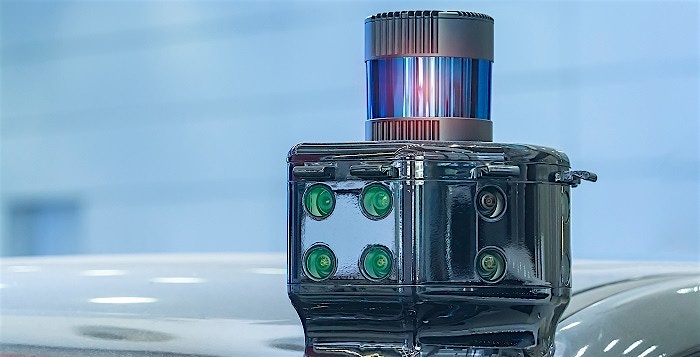Engineers at NASA’s Goddard Space Flight Center are helping NASA improve its Lidar technology to help its scientists and explorers with remote sensing and surveying, mapping, 3D-image scanning, hazard detection and avoidance and navigation.
Goddard engineers and researchers are seeking to expand the usefulness of Lidar applications in communication and navigation, planetary exploration and space operations.
Lidar technology, is like sonar, but uses light instead of sound, has increasingly helped NASA scientists and explorers with remote sensing and surveying. Cutting edge innovations by Goddard researchers seek to refine Lidars into smaller, lighter, more versatile tools for exploration.
Current Lidar projects
One of the lidar projects being worked on by research engineer Mark Stephen is developing a deployable, segmented telescope to capture the returning light signal using state-of-the-art flat-panel optics that are organized into foldable, origami-inspired panels.
“Most people want really high performance, but they want it in a small, light and power-efficient package,” Stephen said. “We’re trying to find the best balance and cost matters.”
Stephen is working with researchers at Brigham Young University as well and, together, their team looks to provide future missions with the benefits of Lidar technology at a cheaper price point and greater efficiency. Lidar receivers depend on bulky lenses to capture light and these large lenses are generally where Lidar technology tends to get heavy.
Flat optics utilize new types of nano-structured materials to manipulate individual photons. The meta-materials then allow thin and lightweight optics to perform the same functions as the larger, more expensive lenses.
The flat optics project is a three-year effort to improve Lidar technology through a Radical Innovation Initiative grant within Goddard’s Internal Research and Development (IRAD) program and the project has been picked up by NASA’s Earth Science Technology Office to fund further improvements.
Elsewhere, Goddard engineer Guangning Yang’s research seeks to improve Lidar through the production of multiple wavelengths of light from a single beam. Most current Lidars use multiple beams of a single wavelength to increase their accuracy.
The Concurrent AI Spectrometry and Adaptive Lidar System (CASALS) is a Lidar technology that can sweep a large area more efficiently and starts with one laser pulse. However, instead of splitting that pulse into various directions it needs to travel, the technology changes wavelength of the laser at a very high speed.
“We have improved the efficiency,” Yang said, “and that will allow us to reduce the instrument’s size dramatically.”
In addition to efficiency improvements, CASALS is a smaller instrument and could help provide higher-density mapping of Earth and other planets and moons.
Both the flat optics and wavelength scanning projects can offer new opportunities in science and navigation and expand the possibilities of Lidar technology.
A leader in engineering services
According to Everest Group, HCLTech is recognized as a leader in the Everest Group’s ACES (Autonomous, Connected, Electric and Shared) Automotive Engineering Services PEAK Matrix Assessment 2023. The IT giant has an extensive portfolio of IP around telematics platform and battery management systems, while also maintaining a portfolio that includes Lidar technology.
“In the rapidly evolving automotive engineering services sector, HCLTech has emerged as a global Leader, distinguished by our multi-vertical expertise and extensive experience in traditional and digital engineering,” said Hari Sadarahalli, Corporate Vice President, Engineering and R&D Services, HCLTech.
Supported by a solid ecosystem of partners, HCLTech’s offerings are further backed by investments in developing solutions, establishing labs and Centers of Excellence and a robust partnership network. Their flexibility allows the organization to adapt to project requirements, commercials, access to a wider talent pool and strong domain knowledge in the ACES space. HCLTech is in a unique position to partner with and transform enterprises business who want to leverage digital technologies to do so.




